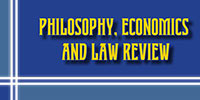Yurii KRAMARENKO
Ph.D. (Law), Associate Professor (Dnipropetrovsk State University of Internal Affairs), Ukraine
ORCID iD: orcid.org/0000-0002-9023-6302
ykramlawyer@gmail.com
UDC 343.9.022
DOI 10.31733/2786-491X-2021-104-116
Keywords: organized crime, purposeful system, interaction, worldview, actors of influence
Abstract. In this article organized crime and organized criminal groups are considered as purposeful social systems with certain parameters. The articleʼs objective is to give a general description and determine the most typical trends in their activities.
The actors of organized crime (criminal groups) in this paper are understood as stable hierarchical associations of several persons created in order to obtain personal and general profit illegally, while for managers of different levels this type of activity is the main form of employment. Organized crime is understood as the totality of criminal groups interacting among themselves, having a similar worldview, goals, tool, and ways to achieve them.
Being part of the social system and self-compensating at the expense of members of society, organized crime is in a certain environment. The «environment» means a society as a whole, a set of individuals, social groups and actors of influence who have the ability to come into contact with each other directly or indirectly, exercising mutual influence. The actors of influence include: the state (government), interstate and international organizations, the church, corporations, the media, non-government public organizations.
The features of organized crime are: 1) conspiracy, strict rules, hierarchical structure, which limits the behavior of individuals who form this system; 2) the lack of the concept of «ideal» in the category of results, whereupon strategic planning is not typical for it; 3) the worldview is focused on the seizure and forced exploitation of resources, technologies and non-entities and systems, violence, separation and opposition are supported; 4) the interaction of individuals within the system has the character of opposition and rivalry, a high probability of the emergence of an internal underground; 5) interaction with other main actors of influence is in the nature of opposition and rivalry; 6) the desire to discredit the government and create conflicts between governments and organizations or within them.
References
- 2019 Edelman trust barometer. Global Report, https://www.edelman.com/sites/g/files/aatuss191/files/2019-02/2019_Edelman_Trust_Barometer_Global_Report.pdf.
- A kind man without coast: the story of the first murder ordered on the darknet/Website BBC Russian, https://www.bbc.com/russian/features-50167318 (in Russian).
- Akoff, R. (1977). Creating thе Соrроrаtе Future. Progress. (in Russian).
- Akoff, R. (1982). The Art of Solving Problem. Mir. (in Russian).
- Akoff, R., & Emeri, F. (1974). About Purposeful Systems. Sov. Radio (in Russian).
- Alesina, A., Piccolo S., & Pinotti P. (2019). Organized Crime, Violence, and Politics. The Review of Economic Studies, 86(2), March 2019, 457-499, https://doi.org/10.1093/restud/rdy036.
- Andreas, P., & Naím, M. (2012). Foreign Affairs «Measuring the Mafia-State Menace Are Government-Backed Gangs a Grave New Threat?», https://www.foreignaffairs.com/articles/2012-07-01/measuring-mafia-state-menace.
- Balint, M. (2016). Anatomy of a Post-Communist Mafia State: The Case of Hungary. Novoye literaturnoye obozreniye. (in Russian).
- Belkin, R. (ed.) et al. (2006). Forensics. NORMA. (in Russian).
- Chebykina, N., & Molodavkin, V. (2018). Failed states and quasi-states: international legal analysis. Vestnik Omskogo universiteta. Seriya «Pravo», 3 (56), 54-58, https://cyberleninka.ru/article/n/failed-states-i-kvazigosudarstva-mezhdunarodno-pravovoy-analiz (in Russian).
- Dickie, J. (2020). Cosa Nostra: a history of the Sicilian Mafia. KNT. (in Russian).
- European Union serious and organized crime threat assessment 2017, https://www.europol.europa.eu/activities-services/main-reports/european-union-serious-and-organised-crime-threat-assessment-2017.
- Fragile States Index 2019 – Annual Report, https://fragilestatesindex.org/2019/04/07/fragile-states-index-2019-annual-report/.
- Goryainov, K. (ed.) et al. (2007). Theory of operational-search activities. INFRA-M. (in Russian).
- Hobbes, Th. (2017) Leviathan. RIPOL klassik. (in Russian).
- Jung, C. (2001). Psychological types. Azbuka. (in Russian).
- Khropanyuk, V. (2008) Theory of State and Law. Interstil: Omega-L. (in Russian).
- Korzhanskyi, M. (1996). Criminal law of Ukraine. Part general: Lectures. Naukova dumka. (in Ukrainian).
- Mafia today: how the Italian clans work / Website BBC Russian, https://www.bbc.com/russian/features-42853350 (in Russian).
- Malkov, V. (ed.) (2006). Criminology. Yustitsinform. (in Russian).
- Mental health / Website World Health Organization, https://www.who.int/news-room/facts-in-pictures/detail/mental-health.
- Mirskiy, G. (2006). Return to the Middle Ages? Rossiya v globalnoy politike, 5, https://globalaffairs.ru/articles/vozvrat-v-srednevekove/ (in Russian).
- Muhametov, R. (2014). The phenomenon of the «Islamic State». Rossiya v globalnoy politike, 5, https://globalaffairs.ru/articles/fenomen-islamskogo-gosudarstva/ (in Russian).
- Naím, M. (2012). Foreign Affairs «Mafia States Organized Crime Takes Office». May/June 2012, https://www.foreignaffairs.com/articles/2012-04-20/mafia-states.
- Ndrangheta: life in the dungeons of the Calabrian mafia / Website BBC Russian, https://www.bbc.com/russian/society/2013/05/130501_italy_mafia_tunnels (in Russian).
- Ovchinskiy, V. (2006). 21st Century Mafia: Made in China. Rossiya v globalnoy politike, 4, https://globalaffairs.ru/articles/mafiya-xxi-veka-sdelano-v-kitae/. (in Russian).
- Ovchinskiy, V. (2018). Artificial Intelligence. Big data. Crime. Knizhnyy mir. (in Russian).
- Ovchinskiy, V. (2016). Mafia: new global trends. Knizhnyy mir. (in Russian).
- Schneider, J. (2018). «Fifty Years of Mafia Corruption and Anti-mafia Reform». Current Anthropology 59, 18, 16-27, https://doi.org/10.1086/695801.
- Terziev, V., Petkov, M., & Krastev, D. (2018). Eurojust Casework on Mafia-Type Criminal Organisations (July 2, 2018). Proceedings of SOCIOINT 2018 – 5th International Conference on Education, Social Sciences and Humanities, July 2-4, 2018 – Dubai, U.A.E., https://ssrn.com/abstract=3208553.
- The Case of «Newspaper «Ukrayina-Tsenter» v. Ukraine». (Application no. 16695/04), https://zakon.rada.gov.ua/laws/show/974_594 (in Ukrainian).
- The Case of the «Newspaper office «Pravoye Delo» and Stekel v. Ukraine (Application no. 33014/05), https://zakon.rada.gov.ua/laws/show/974_807 (in Ukrainian).
- The Global Competitiveness Report 2019. Organized crime, http://reports.weforum.org/global-competitiveness-report-2019/competitiveness-rankings/#series=EOSQ035.
- The main competitor of education– Netflix, http://www.edutainme.ru/post/glavnyy-konkurent-obrazovaniya-netflix/?fbclid=IwAR1-N3sgbt0vVxtvdud6PvA7qVRoKt6N0sMsvNBQRNPSbPV4gfkXiG8_ahY (in Russian).
- The Secret Life of Young Militants of ISIS / Website BBC Russian, https://www.bbc.com/russian/resources/idt-sh/is_fighters_russian (in Russian).
- Transnational organized crime: the globalized illegal economy, https://www.unodc.org/toc/en/crimes/organized-crime.html.
- United Nations Convention against transnational organized crime and the protocols thereto,https://www.unodc.org/documents/treaties/UNTOC/Publications/TOC%20Convention/TOCebook-e.pdf.
- Website Fragile States Index, https://fragilestatesindex.org.
- Website Howard Gardner, https://howardgardner.com.
- Website of the United Nations Office on Drugs and Crime, https://www.unodc.org/e4j/en/organized-crime/module-1/key-issues/defining-organized-crime.html.
- Website Prosecutor Generalʼs office of Ukraine, https://old.gp.gov.ua/ua/statinfo.html (in Ukrainian).
